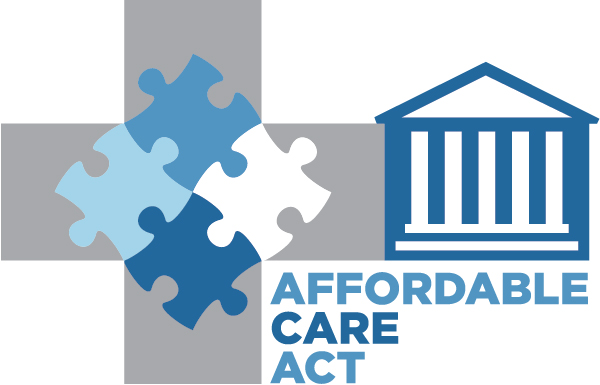
The Affordable Care Act (ACA), a transformative U.S. healthcare reform law enacted in 2010, marks a pivotal shift in the healthcare system.
Its primary objective was to make healthcare more accessible and affordable for a broader spectrum of the American population, while also improving the quality of care. This groundbreaking legislation has reshaped the healthcare landscape, impacting millions of lives.
This blog post aims to demystify the ACA, breaking down its complex components into easily understandable segments, and shedding light on its significance and impact on the U.S. healthcare system.
Historical Context

Tracing back to the pre-ACA era, the U.S. healthcare scene was riddled with significant challenges. A substantial number of Americans were uninsured, and healthcare costs were escalating uncontrollably.
This backdrop paved the way for the introduction of the ACA in 2010. It was a response to a longstanding need for reform in a system that left many behind due to high costs and limited access.
The historical journey to the ACA’s enactment is a story of various attempts at healthcare reform, reflecting decades of debate and policy proposals aimed at expanding coverage and controlling healthcare costs.
Key Objectives of the ACA
The ACA set out with ambitious goals: to significantly expand healthcare coverage, to reduce the soaring healthcare costs, and to improve the overall quality of care.
This multi-faceted approach was designed to address the various shortcomings of the existing system.
By implementing measures such as the individual mandate, the creation of health insurance marketplaces, and the expansion of Medicaid, the ACA sought to reduce the number of uninsured Americans drastically.
Additionally, it aimed to make healthcare more affordable through subsidies and tax credits, while also setting standards for healthcare providers to ensure better patient outcomes.
Individual Mandate
The individual mandate, a cornerstone of the ACA, required most Americans to have health insurance or face a penalty. This mandate was implemented to broaden the insurance pool, including healthier individuals, which would in turn lower insurance costs for everyone.
The logic behind this was to balance the costs incurred by the insured sick population, thereby stabilizing insurance premiums. While controversial, this mandate was crucial for the ACA’s goal of universal coverage.
It aimed to reduce the number of uninsured citizens and prevent scenarios where people would seek emergency care without having insurance, a situation that often led to higher healthcare costs for everyone. To avoid this, you should compare healthcare plans before making the decision.
Medicaid Expansion

Under the ACA, Medicaid expansion became a critical element in increasing access to healthcare for low-income individuals and families. This expansion aimed to cover adults with incomes up to 138% of the federal poverty level, significantly increasing the number of people eligible for Medicaid.
States were given the option to expand their Medicaid programs, with the federal government covering a substantial portion of the costs.
This expansion was fundamental in narrowing the coverage gap, especially among low-income adults who previously fell into a coverage blind spot, earning too much to qualify for Medicaid but not enough to afford private insurance.
Health Insurance Marketplaces
The ACA introduced health insurance marketplaces, a revolutionary concept designed to simplify the process of purchasing health insurance. These online marketplaces provide a platform where individuals and small businesses can compare and purchase insurance plans.
They were created to foster competition among insurers, thus leading to better prices and services for consumers.
The marketplaces also play a crucial role in making insurance more accessible, as they are the portals through which people can apply for subsidies and tax credits, making health insurance more affordable for low- and middle-income individuals and families.
Pre-Existing Conditions

One of the most celebrated aspects of the ACA is its provision regarding pre-existing conditions. Before the ACA, insurance companies could deny coverage or charge higher premiums based on pre-existing health conditions.
The ACA prohibited this practice, ensuring that people with health conditions like diabetes, cancer, or heart disease could not be discriminated against. This provision significantly widened access to insurance for millions of Americans who might have otherwise been denied coverage or priced out of the market.
Essential Health Benefits
Under the ACA, insurance plans were required to cover a set of essential health benefits. These benefits include critical services like emergency services, maternity and newborn care, prescription drugs, and mental health services.
By mandating these benefits, the ACA ensured that insurance plans offered comprehensive coverage, rather than minimal policies that provided little real benefit to policyholders. This requirement was integral in improving the quality of healthcare and ensuring that individuals had access to the services they needed.
Subsidies and Tax Credits

To make health insurance more affordable, the ACA introduced subsidies and tax credits. These financial aids were designed to lower the cost of insurance premiums for individuals and families with incomes between 100% and 400% of the federal poverty level.
The subsidies are advanced premium tax credits that can be applied directly to the cost of premiums, reducing the amount individuals have to pay out of pocket. This approach has made health insurance more attainable for millions of Americans, reducing the financial burden of healthcare.
Employer Mandate
The employer mandate under the ACA required large employers (those with 50 or more full-time employees) to offer affordable health insurance to their employees. This mandate was intended to ensure that employers played a role in providing healthcare coverage.
The ACA defines ‘affordable’ as insurance that costs employees no more than 9.5% of their household income. Employers who fail to comply face significant penalties. This mandate has played a crucial role in expanding coverage and has been a key factor in the increase in employer-provided health insurance since the enactment of the ACA.
Impact on Healthcare Access
The ACA has had a profound impact on healthcare access in the United States. Since its implementation, there has been a significant decrease in the number of uninsured Americans.
Data shows that millions have gained coverage through the ACA, either via Medicaid expansion, employer-provided insurance, or the insurance marketplaces.
Access to preventive services has increased, and there have been improvements in healthcare affordability. However, the impact varies by state, especially concerning Medicaid expansion, which not all states have adopted.
Current Status and Future of the ACA
As of now, the ACA remains a fundamental part of the U.S. healthcare system, despite various challenges and attempts to repeal or alter it. Its future, however, is subject to the shifting landscape of U.S. politics and ongoing legal challenges.
Healthcare continues to be a central issue in political discourse, with debates focusing on how to best improve upon or replace the ACA.
The ongoing discussion includes topics like expanding Medicare, introducing a public option, or moving towards a single-payer system. The ACA’s endurance and adaptability will likely depend on the outcomes of these debates and the evolving needs of the American healthcare system.













